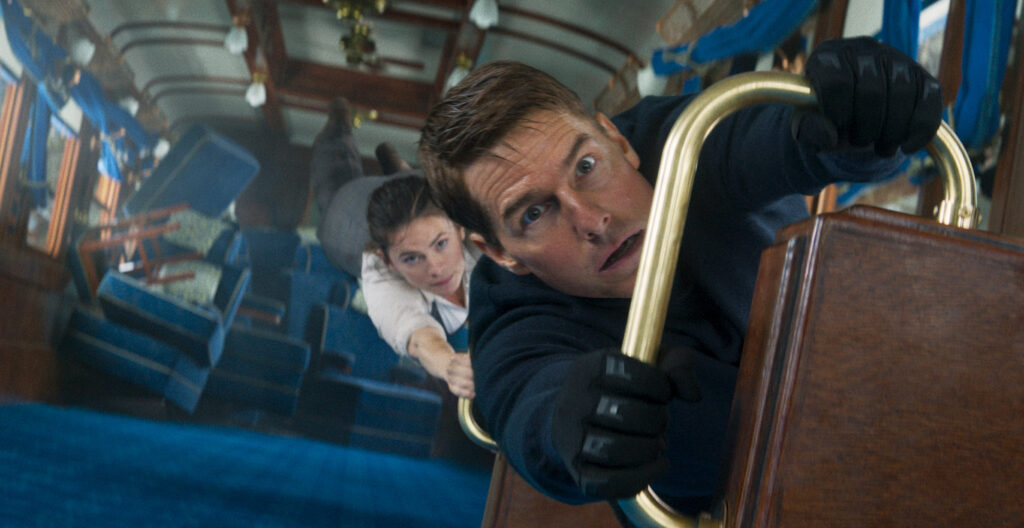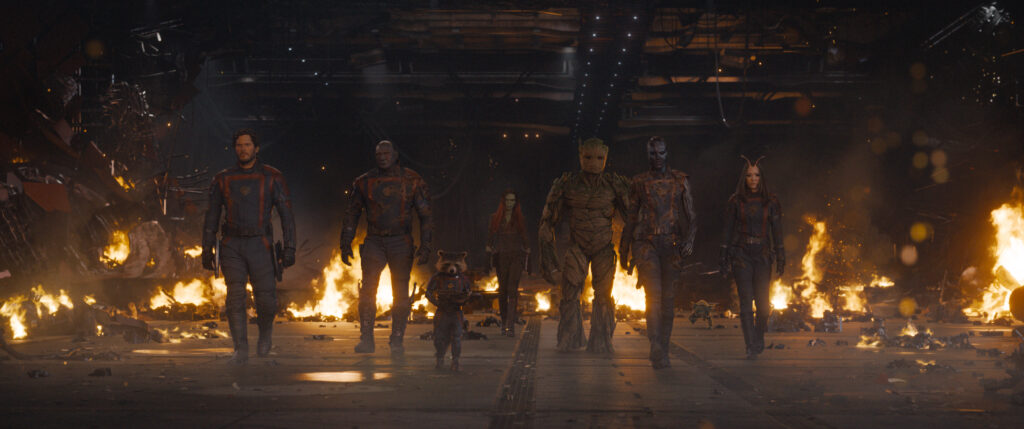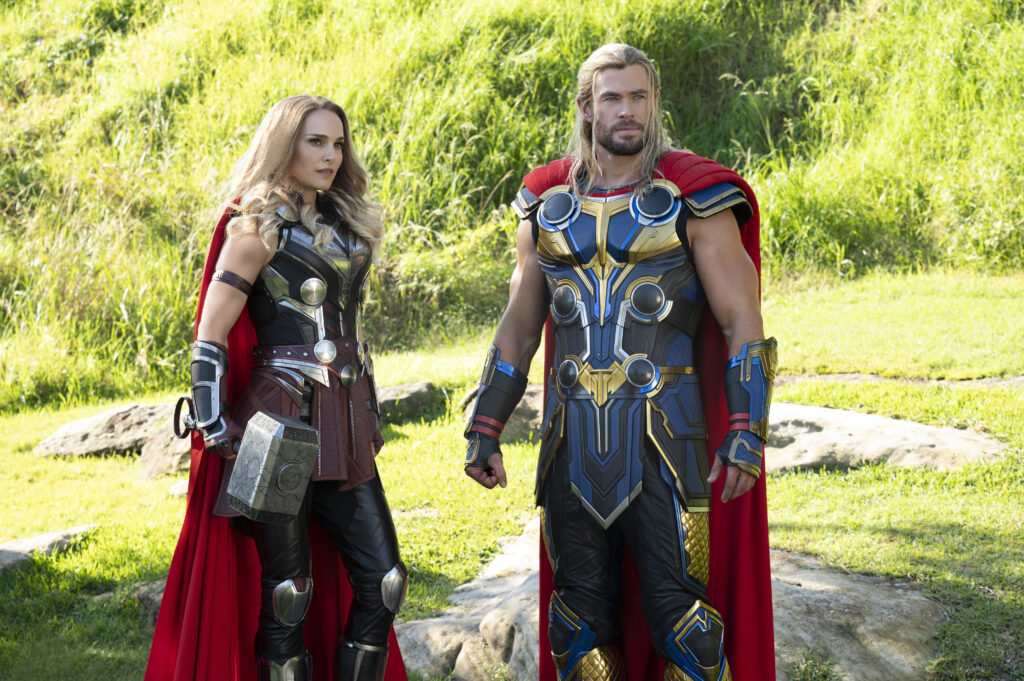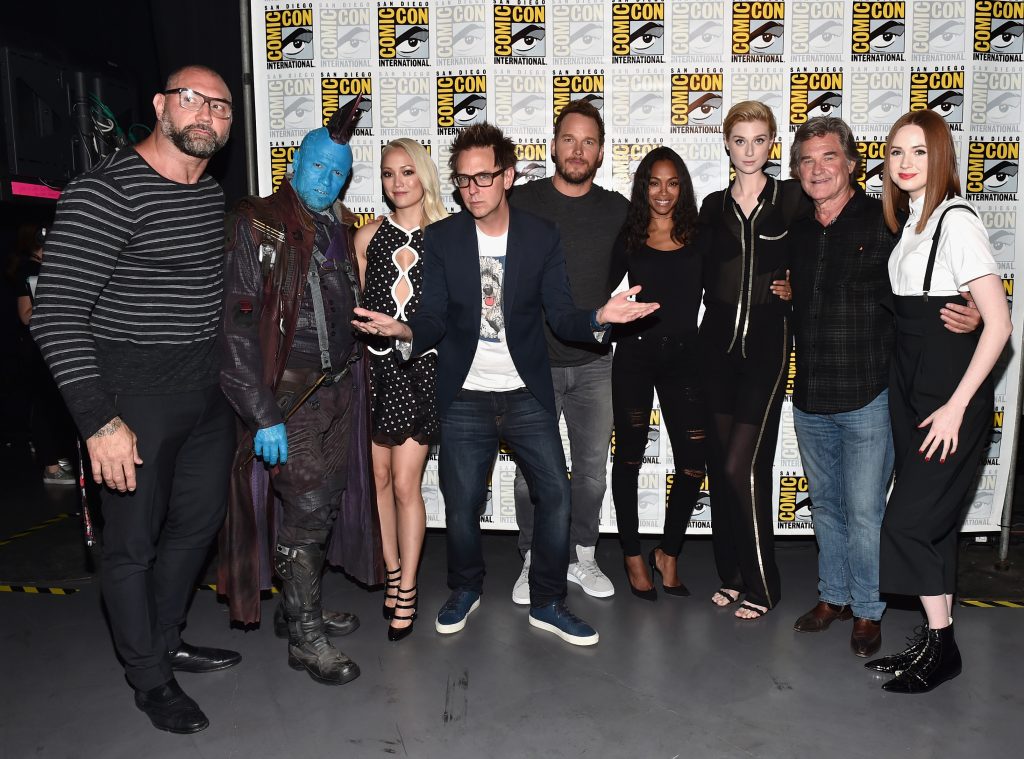July 5, 2023
by Carla Hay

“Mission: Impossible – Dead Reckoning Part One”
Directed by Christopher McQuarrie
Some language in Italian and French with subtitles
Culture Representation: Taking place from various parts of the world, the action film “Mission: Impossible – Dead Reckoning Part One” features a predominantly white cast of characters (with some African Americans, Latinos and Asians) who are connected in some way with government operations or criminal activities.
Culture Clash: IMF (International Mission Force) rogue agent Ethan Hunt is once again on a mission to save the world from deadly villains.
Culture Audience: Besides appealing the obvious target audience of “Mission: Impossible” fans, “Mission: Impossible – Dead Reckoning Part One” will appeal primarily to people who are fans of Tom Cruise and spy thrillers with death-defying action stunts.

By now, most movie fans know that the “Mission: Impossible” movie series, starring Tom Cruise as IMF rogue agent Ethan Hunt, will have a lot of amazing stunts and action sequences. Cruise famously does his own principal stunts for these films. The “Mission: Impossible” movie series (based on the TV series of the same name) began in 1996. Instead of slowing down with these movies, Cruise seems determined to do even more outrageous stunts. In “Mission: Impossible – Dead Reckoning Part One,” the stakes get even higher when Ethan and all the main characters face the challenge of an entity that can create false images and alter people’s perceptions of reality.
As already shown in the movie’s trailer, Cruise’s biggest stunt in the film is driving custom-made Honda CRF 250 off of Norway’s Helsetkopen mountain, where he fell 4,000 feet into a ravine before opening his parachute about 500 feet from the ground. There are more stunts (some using obvious visual effects) involving planes, trains and automobiles. The movie also introduces a few intriguing new characters who will be appearing in more than one “Mission: Impossible” movie.
Directed by Chistopher McQuarrie, “Mission: Impossible – Dead Reckoning Part One” is the seventh film in the “Mission: Impossible” movie series and the third consecutive “Mission: Impossible” film that McQuarrie has directed, following 2015’s “Mission: Impossible – Rogue Nation” and 2018’s “Mission: Impossible – Fallout.” Cruise and McQuarrie are the producers of “Mission: Impossible – Dead Reckoning Part One,” which was written by McQuarrie and Erik Jendresen. It’s the same writing, directing and producing team behind “Mission: Impossible – Dead Reckoning Part Two,” which is set for release in 2024.
“Mission: Impossible – Dead Reckoning Part One” is the most ambitious of the “Mission: Impossible” movie series so far but in some ways is also the most ridiculous. In trying so hard to outdo its predecessors, the movie gets into cartoonish territory when characters don’t get any injuries in crashes and explosions that would kill or maim most people in real life. Some of the plot also gets too convoluted. Despite these flaws, what a thrill ride it is. This action-packed and suspenseful film mostly earns its total running time of 156 minutes, even though “Mission: Impossible – Dead Reckoning Part One” still could’ve benefited from tighter film editing. (For example, the movie’s opening credits don’t happen until 28 minutes into the film.)
“Mission: Impossible – Dead Reckoning Part One” opens with a Russian submarine getting blown up after getting hit with a torpedo. The submarine’s video monitors and other computer systems were hacked by a mysterious entity that can create illusions to confuse the submarine’s occupants. These illusions caught the occupants off guard, which led to the torpedo destroying the submarine and everyone inside.
This all-powerful hacking tool is essentially on a computer flash drive, which is called a key. It should come as no surprise that every major terrorist group and every major governmental superpower is looking for this key, which is being sold to the highest bidder. Ethan works for a secretive government operation called International Mission Force (IMF), which gives him a new task in each “Mission: Impossible” movie. In “Mission: Impossible – Dead Reckoning Part One” Ethan and his team have been tasked with finding the key before it gets into the wrong hands.
Ethan agrees to accept this mission, but he disagrees with the U.S. Director of National Intelligence, whose last name is Denlinger (played by Cary Elwes), who is also the head of a mysterious spy group called The Community. Denlinger (who is based in Washington, D.C.) thinks the U.S. government should be able to control this entity. Ethan thinks that the entity should be destroyed. Denlinger doesn’t know that IMF exists until he meets Ethan.
For this mission, Ethan is once again joined by his two trusty sidekicks who are computer technology experts and hackers: Luther Stickell (played by Ving Rhames), who is calm and logical, is Ethan’s oldest friend. Luther’s nicknames are Phinneas Freak and The Net Ranger. Benji Dunn (played by Simon Pegg), who is jumpy and neurotic, often follows orders from Luther.
Returning to the “Mission: Impossible” franchise are mercenary Ilsa Faust (played by Rebecca Ferguson), who has complicated relationship with Ethan; Eugene Kittridge (played by Henry Czerny), who was in 1996’s “Mission: Impossible” movie and who is now the director of the CIA; and the morally ambiguous Alanna Mitsopolis (played by Vanessa Kirby), also known as The White Widow. There’s a very memorable sequence on a train that involves Alanna/The White Widow.
During this globetrotting hunt, Ethan and his team go to various places, including the Arabian Desert, Abu Dhabi, Amsterdam, Rome and the Austrian Alps. They are being hunted by operatives from the U.S. government agency Clandestine Services. A Clandestine Services operative named Briggs (played by Shea Whigham) is leading this hunt. Briggs is a gruff taskmaster who likes to bend the rules, while his relatively new subordinate Degas (played by Greg Tarzan Davis) is very by-the-book and wants to follow the established protocol.
The movie’s chief villain is a mysterious agitator named Gabriel (played by Esai Morales), who has his ruthless sidekick Paris (played by Pom Klementieff) do a lot of his dirty work. Ethan and Gabriel share a past that has to do with a woman named Marie (played by Mariela Garriga), with this shared past explaining some of Gabriel’s motivations. Paris is the one who is most often seen trying to kill Ethan and a cunning thief named Grace (played by Hayley Atwell), who becomes Ethan’s reluctant and often untrustworthy accomplice in this race to get possession of the key.
One of the ways that “Mission: Impossible – Dead Reckoning Part One” stands apart from so many other action films is that it doesn’t play into tired stereotypes of having a principal cast of people who mostly under the age of 40. Likewise, “Mission: Impossible – Dead Reckoning Part One” also defies that action movie stereotype of having just one leading actress (usually someone’s love interest in the movie) among a slew of male leading actors. In “Mission: Impossible – Dead Reckoning Part One,” there are four strong women who have prominent roles in the movie.
Klementieff is a standout among “Mission: Impossible” villains. Her menacing Paris character is in stark contrast to the sweet-natured outer-space alien Mantis that Klementieff played in Marvel Studios’ superhero “Guardians of the Galaxy” blockbusters. In many ways, Paris outshines Gabriel, since Gabriel is more of a psychological villain than someone who can barrel through streets in a high-speed car chases or cause mayhem with an arsenal of weapons.
Atwell also holds her own in the action scenes, although some viewers might find Grace’s intentionally duplicitous personality a little annoying. Rhames and Pegg continue their sometimes-amusing rapport as Luther and Benji. Cruise does some of his best stunt work ever in the movie. If stunt work had a category at the Academy Awards, then Cruise would be a certain nominee if not winner for “Mission: Impossible – Dead Reckoning Part One.” It’s a breathtaking thriller that delivers beyond expectations for action scenes and spy intrigue. However, the “Mission: Impossible” filmmakers need to remember to have some of these action scenes more grounded in the reality of human frailties and the realistic consequences of being in these death-defying situations.
Paramount Pictures will release “Mission: Impossible – Dead Reckoning Part One” in U.S. cinemas on July 12, 2023, with sneak previews on July 10, 2023.






